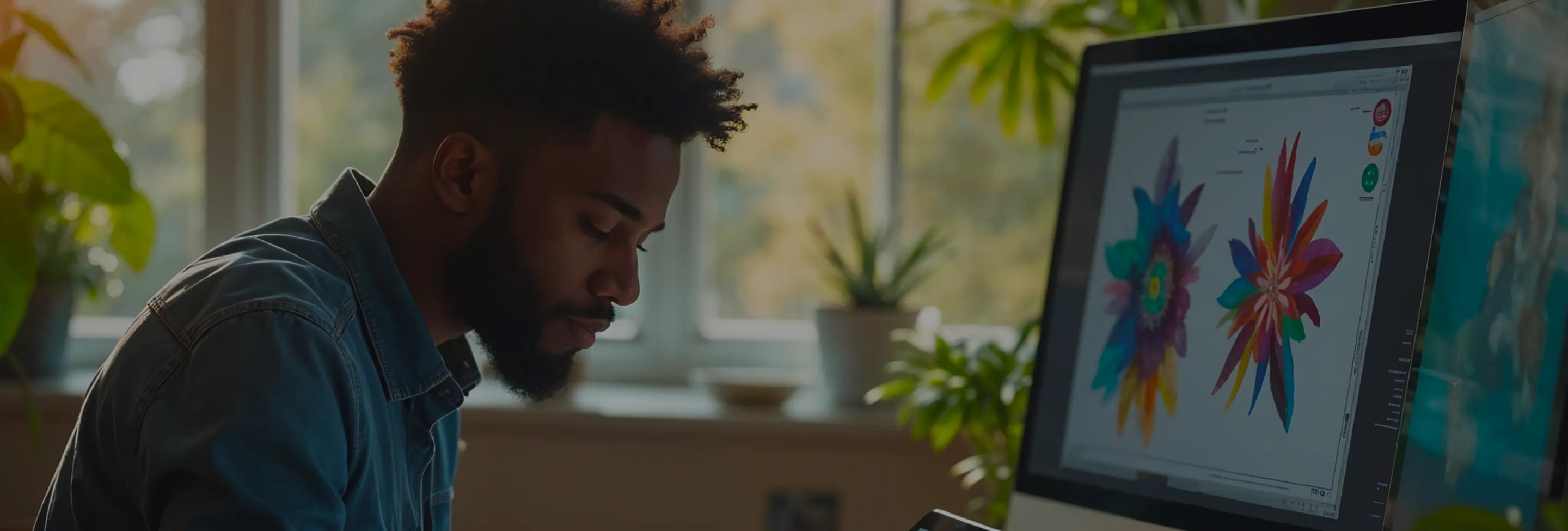
Through our analysis of over 2,000 startup projects in the past year, we identified the top 12 UI design questions that hinder new businesses from delivering seamless user experiences. These insights address the most critical UI challenges startups face, offering actionable solutions to accelerate your product development and enhance user satisfaction.
Answer:
Every startup should adhere to fundamental UI principles to create intuitive and engaging interfaces. These include:
Example:
A startup developing a task management app can apply consistency by using the same button styles and color schemes throughout the app, making it easier for users to navigate and understand functionalities.
Common Misconception:
"More features mean a better UI." In reality, overcomplicating the UI can overwhelm users. Focus on delivering essential features with a clean and straightforward design.
Actionable Solution:
Conduct user testing to identify which features are most valuable to your audience and prioritize simplicity in your design process.
Answer:
A mobile-first approach is crucial, especially given the increasing number of users accessing applications via mobile devices. Designing for mobile first ensures that your UI is responsive, user-friendly, and optimized for smaller screens, which often leads to better performance and usability across all devices.
Example:
A fintech startup might prioritize mobile design to cater to users who manage their finances on the go, ensuring that key functionalities like transactions and balance checks are easily accessible.
Actionable Solution:
Start your design process by sketching layouts for mobile screens, then expand to larger devices, ensuring scalability and consistency.
Answer:
Startups can leverage several cost-effective or free UI design tools without compromising quality:
Example:
A SaaS startup can use Figma for real-time collaboration among designers and developers, streamlining the design-to-development handoff process.
Actionable Solution:
Evaluate the specific needs of your project and team collaboration preferences to choose the most suitable tool that fits your budget.
Answer:
Prototyping allows startups to visualize and test their UI designs before full-scale development, saving time and resources. It helps in:
Example:
An e-commerce startup can create an interactive prototype of their checkout process to gather user feedback and identify friction points before building the actual functionality.
Actionable Solution:
Use tools like Figma or Adobe XD to develop interactive prototypes and conduct user testing sessions to refine your UI based on real user insights.
Answer:
Balancing aesthetics and functionality is key to creating a compelling UI. While aesthetics attract users, functionality ensures they can accomplish their goals efficiently. Startups should:
Example:
A health tracking app can use attractive visuals for data representation while ensuring that users can easily log activities and view progress without unnecessary distractions.
Actionable Solution:
Conduct usability testing to identify if aesthetic choices are enhancing or hindering functionality, and adjust designs accordingly to maintain an optimal balance.
Answer:
User research is fundamental in creating a UI that resonates with your target audience. It provides insights into user behaviors, needs, and pain points, enabling designers to create more effective and user-centric interfaces.
Example:
A startup developing a language learning app can use surveys and interviews to discover that users prioritize interactive exercises over lengthy reading materials, guiding the UI design to emphasize interactive features.
Actionable Solution:
Implement regular user research activities, such as interviews and usability testing, to continuously gather insights that shape and refine your UI design.
Answer:
Responsive design ensures your application looks and functions well across various devices and screen sizes. To implement it effectively:
Example:
A startup launching a news platform can use responsive design to ensure articles are easily readable on both smartphones and large desktop monitors, adjusting font sizes and layout accordingly.
Actionable Solution:
Leverage CSS frameworks like Bootstrap or use CSS media queries to create adaptable layouts that respond seamlessly to different device sizes.
Answer:
Scalable UI design accommodates growth in user base and feature set without compromising performance or usability. Best practices include:
Example:
A startup building a social media platform can implement a component-based architecture, allowing for the easy addition of new features like stories or live streaming without overhauling the entire UI.
Actionable Solution:
Invest in a robust design system and component library from the outset, ensuring that new UI elements can be integrated seamlessly as the product evolves.
Answer:
Accessibility ensures that your UI is usable by people with diverse abilities. To achieve this:
Example:
A startup developing an online education platform can implement high-contrast themes and keyboard navigation to accommodate users with visual and motor impairments, enhancing overall accessibility.
Actionable Solution:
Regularly conduct accessibility audits using tools like Lighthouse or Axe, and involve users with disabilities in testing to ensure your UI meets accessibility standards.
Answer:
Performance issues can degrade user experience and lead to loss of users. Common UI performance pitfalls include:
Example:
A startup's mobile app might experience slow load times due to uncompressed images and excessive JavaScript, leading to user frustration and higher bounce rates.
Actionable Solution:
Optimize asset sizes, minimize and compress code, implement lazy loading where appropriate, and regularly monitor performance using tools like Google PageSpeed Insights or WebPageTest.
Answer:
A/B testing allows startups to compare two versions of a UI element to determine which performs better. To implement it effectively:
Example:
A SaaS startup might A/B test two different call-to-action button colors to see which one results in higher sign-up rates, using the data to inform future design choices.
Actionable Solution:
Use A/B testing tools like Optimizely or Google Optimize, set up clear hypotheses, and analyze the outcomes to make informed UI adjustments that enhance user experience and business metrics.
Answer:
Encountering UI bugs can disrupt the user experience. Effective troubleshooting involves:
Example:
A startup notices that a dropdown menu isn't functioning on certain browsers. By reproducing the issue and inspecting console logs, they discover a JavaScript compatibility problem, allowing them to apply a polyfill or adjust the code for cross-browser support.
Actionable Solution:
Establish a systematic debugging process, utilize version control to track changes, and incorporate automated testing to catch and resolve UI bugs promptly.
Answer:
Design systems provide a centralized repository of design standards, components, and guidelines, facilitating consistency and efficiency as your startup scales. Benefits include:
Example:
A growing fintech startup can implement a design system that standardizes button styles, typography, and color schemes across their web and mobile applications, ensuring a cohesive user experience as new features are added.
Actionable Solution:
Invest time in developing a comprehensive design system early on, using tools like Storybook or Figma Libraries, and encourage team adherence to maintain scalability and consistency.
Answer:
Maintaining agility in UI design allows startups to adapt quickly to user feedback and market changes. Strategies include:
Example:
A startup creating a project management tool can use Scrum sprints to iteratively design and develop new features, allowing them to respond swiftly to user requests and market trends.
Actionable Solution:
Integrate agile practices into your design workflow, maintain open communication channels within your team, and be prepared to pivot based on real-time feedback and data.
Navigating UI design challenges is pivotal for startups aiming to deliver exceptional user experiences and stand out in competitive markets. By adhering to essential UI principles, leveraging the right tools, integrating thorough user research, and maintaining agility and scalability, startups can create interfaces that not only meet user expectations but also drive business growth. Implementing these expert-backed strategies will empower your startup to overcome common UI hurdles and achieve long-term success.




Subscribe to our newsletter to receive $100 off your first month of Tapflare's flat rate unlimited design and development service. Your coupon code will be sent to your email.